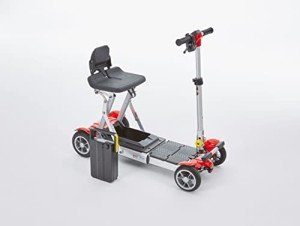Understanding Mobility Aids: Enhancing Independence and Quality of Life
As society continues to age and individuals significantly look for methods to maintain self-reliance, the need for mobility aids has actually never ever been more pertinent. Mobility aids, which incorporate a variety of devices developed to help individuals with walking or moving around, play an essential role in promoting mobility, improving safety, and improving overall quality of life. This blog site post will explore the different types of mobility aids, their advantages, factors to consider for selection, and answer some regularly asked questions.
Types of Mobility Aids
Numerous mobility aids are available, each designed to address particular requirements. The following table sums up a few of the most common types of mobility aids and their functions.
| Type of Mobility Aid | Description | Best Suited For | Key Features |
|---|---|---|---|
| Walking sticks | A handheld stick offering assistance and balance. | Individuals who require very little support. | Light-weight, portable, adjustable height. |
| Walkers | Four-legged frames supplying stability. | Those requiring significant assistance while walking. | Foldable, some with wheels, added security features. |
| Rollators | Wheeled walkers with a seat for resting. | Individuals needing mobility with the alternative to rest. | Brakes, baskets for individual items, adjustable height. |
| Wheelchairs | Chairs with wheels for people with limited mobility. | Those not able to walk or requiring comprehensive support. | Handbook or powered options, customizable seating. |
| Scooters | Motorized devices for larger distances. | Individuals with restricted stamina however requiring self-reliance. | Various sizes and designs, frequently easily transportable. |
| Crutches | Assistance devices placed under the arms or forearms. | People recovering from lower limb injuries. | Adjustable, lightweight, needs upper body strength. |
| Stairlifts | Mechanical devices for moving in between floorings. | Users dealing with difficulties in multi-level homes. | Adjustable for different staircases, automated. |
Advantages of Mobility Aids
Mobility aids supply a selection of benefits that can considerably improve the lives of individuals dealing with mobility challenges. Some significant advantages consist of:
- Increased Independence: Mobility aids empower people to move easily without depending on others for assistance, therefore enhancing their confidence and self-esteem.
- Boosted Safety: Using mobility aids can minimize the risk of falls and injuries, specifically for older adults or those with balance concerns.
- Enhanced Quality of Life: By assisting in mobility, people can participate in social activities, go to occasions, and enjoy life more completely, adding to better psychological and psychological health.
- Rehabilitation Support: After surgery or injury, mobility aids offer essential assistance and stability, assisting in recovery and rehab procedures.
- Accessibility: Many mobility aids are designed to be used both inside and outdoors, making sure that people can navigate various environments with ease.
Elements to Consider When Choosing Mobility Aids
Picking the suitable mobility help requires careful consideration of numerous factors, including:
| Factor | Factors to consider |
|---|---|
| User's Needs | Evaluate the level of mobility required; consider whether the user requires short-term or long-lasting support. |
| Physical Limitations | Evaluate the user's strength, balance, and coordination to identify the best kind of help. |
| Setting | Consider the primary environments where the aid will be used, such as home, outdoors, or particular surfaces. |
| Weight and Portability | Ensure that the selected gadget is manageable relating to portability and storage, especially for outdoor use. |
| Budget | Mobility aids come in a variety of prices; consider insurance protection and available financing alternatives. |
| Adjustability | Choose aids that can be adjusted for height and comfort to accommodate development or altering needs. |
Often Asked Questions About Mobility Aids
1. How do I know if I require a mobility aid?
Lots of aspects can indicate the requirement for a mobility help, such as problem walking or stabilizing, fatigue while standing, or a current surgical treatment affecting mobility. Consulting with a health care expert can supply assistance tailored to individual requirements.
2. What kinds of mobility aids are covered by insurance?
Coverage differs between insurers, but most offer choices for long lasting medical devices, which typically consists of wheelchairs, walkers, and some kinds of canes. Consult your insurance coverage company for specific protection information.
3. Can mobility aids be used outdoors?
Yes, lots of modern-day mobility aids are created for outside usage. Rollators, scooters, and some walkers are equipped with functions for stability and ease of usage on numerous terrain.
4. How do I maintain my mobility help?
Regular maintenance includes looking for any wear and tear, ensuring that parts such as wheels, brakes, and frames are functioning properly, and cleaning up the devices as needed. Following the manufacturer's standards is important for safety.
5. Exists a risk of becoming based on mobility aids?
While some users might end up being reliant on mobility aids, they are designed to promote independence and mobility. Gradually utilizing a mobility help can enhance confidence and aid keep physical strength and coordination.
Mobility aids are vital tools that empower individuals to conquer physical obstacles, promoting independence and improving quality of life. By understanding click the up coming document of mobility aids offered, their advantages, and important elements for factor to consider, households and caretakers can make educated choices that best fulfill the requirements of their enjoyed ones. With the ideal support, those with mobility obstacles can lead satisfying and active lives, totally free to check out the world around them.

